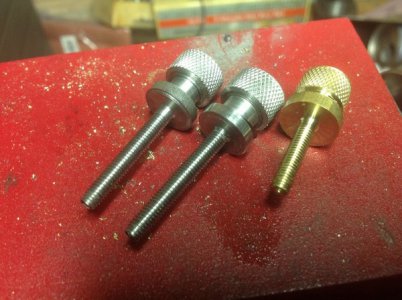- Joined
- Dec 21, 2013
- Messages
- 186
Hey guys. This time I have a question about using the scissor/clamp knurling tool from Little Machine Shop... http://littlemachineshop.com/products/product_view.php?ProductID=3770&category=
I have purchased this tool already, but I'm curious as to the right way to use it on my little Atlas 618. I have tried pushing the knurls into the work, and also directly tightening them down on the workpiece. I've used plenty of WD40 on aluminum. Slow speed, somewhere around 70.
Three problems. One, the arms are sloppy enough that they drift to the right when feeding. I've already replaced the crummy spring clips with bolts and nuts which removes a little slop, but not all.
Two, even when directly centered on the part, it makes everything wobble - the part, the tool, and the live center.
And third, perhaps as a combination of the above two, the knurl comes out very poorly. Regardless of stock size, even on aluminum, with coarse or medium diamond wheels, the knurl comes out very fuzzy.
It's awfully disappointing to have bought a tool like this for 50 dollars and for it to not work well. Any suggestions?
I have purchased this tool already, but I'm curious as to the right way to use it on my little Atlas 618. I have tried pushing the knurls into the work, and also directly tightening them down on the workpiece. I've used plenty of WD40 on aluminum. Slow speed, somewhere around 70.
Three problems. One, the arms are sloppy enough that they drift to the right when feeding. I've already replaced the crummy spring clips with bolts and nuts which removes a little slop, but not all.
Two, even when directly centered on the part, it makes everything wobble - the part, the tool, and the live center.
And third, perhaps as a combination of the above two, the knurl comes out very poorly. Regardless of stock size, even on aluminum, with coarse or medium diamond wheels, the knurl comes out very fuzzy.
It's awfully disappointing to have bought a tool like this for 50 dollars and for it to not work well. Any suggestions?


